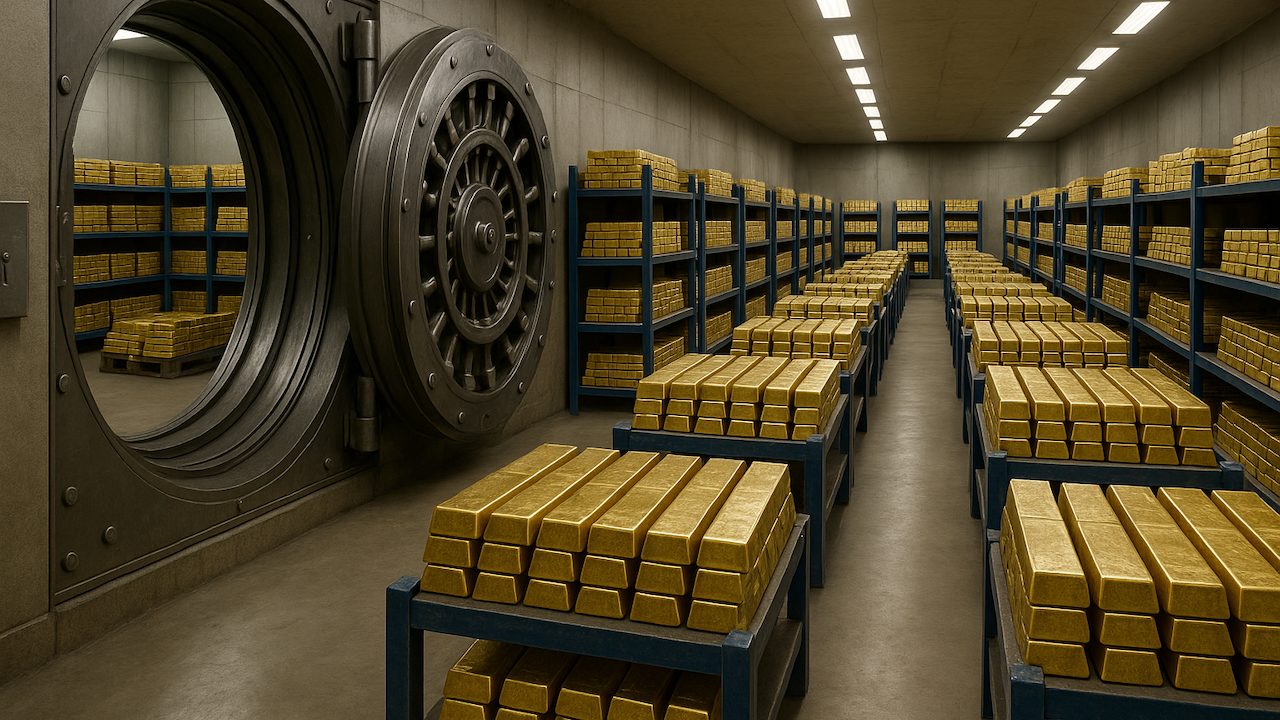(Mike Maharrey, Money Metals News Service) Central bank gold buying moderated in April, as the gold price hit record levels.
Globally, central banks officially added a net 12 tonnes of gold to their reserves in April, according to the latest data compiled by the World Gold Council. This was 12 percent lower than March and below the 12-month average of 28 tonnes.
Gold touched a record high of $3,500 an ounce in April. The World Gold Council said the slowdown in central bank purchases could be in part “a response to the rapid appreciation in the gold price since the start of the year.”
“While the rally to multiple new record highs is unlikely to deter central banks from buying gold – as they tend to be more strategic in nature – it could explain some of the deceleration in the pace of monthly net buying.”
A large decrease in Uzbekistan’s reserves also pushed net purchases lower.
The World Gold Council cautioned against reading too much into the recent slowdown in central bank buying.
“The data series is very volatile, meaning that activity in one month is not necessarily an indication of activity in subsequent months. What’s more, data can be released with, at times, a significant lag. And while higher prices may have pushed up gold allocations in some central bank portfolios, possibly closer to targets, we still expect overall buying to continue, given that the economic and geopolitical outlook remains highly uncertain.”
Poland was the biggest buyer in April, adding 12 tonnes of gold to its reserves. At 509 tonnes, the National Bank of Poland now holds more gold than the European Central Bank.
The NBP has increased its gold reserves by 61 tonnes since the beginning of the year. Poland was the biggest buyer in 2024 as well, adding 90 tonnes to its holdings.
Last year, National Bank of Poland Governor Adam Glapiński indicated the central bank plans to increase its gold holdings to 20 percent of its reserves.
“This makes Poland a more credible country, we have a better standing in all ratings, we are a very serious partner, and we will continue to buy gold.”
The Polish central bank has exceeded that level and continues to add to its reserves.
The Czech National Bank has been adding gold at a steady pace over the last several years. It bought another 3 tonnes in April.
The People’s Bank of China reported an increase in its official reserves for the sixth straight month, adding 2 tonnes to its reported holdings. That pushed its official gold holdings to 2,294 tonnes, about 6.5 percent of its total reserves.
Notice the emphasis on “official.”
China is one of the central banks that likely holds significantly more gold than it publicly discloses. As Jan Nieuwenhuijs has reported, the People’s Bank of China is secretly buying large amounts of gold off the books. According to data parsed by the renowned Money Metals researcher, the Chinese central bank is currently sitting on more than 5,000 tonnes of monetary gold located in Beijing – more than TWICE what has been publicly admitted.
Several other banks reported increases in their gold reserves.
- Turkey – 2 tonnes
- Kyrgyz Republic – 2 tonnes
- Kazakhstan – 1 tonnes
- Jordan – 1 tonnes
As noted, Uzbekistan reported an 11-tonne decrease in its reserves. The Uzbek central bank was also the biggest seller in the first quarter. It is not uncommon for banks that buy from domestic production – such as Uzbekistan and Kazakhstan – to switch between buying and selling.
On net, central banks officially increased their gold holdings by 1,044.6 tonnes in 2024. It was the 15th consecutive year of expanding gold reserves.
Last year was the third-largest expansion of central bank gold reserves on record, coming in just 6.2 tonnes lower than in 2023 and 91 tonnes lower than the all-time high set in 2022. (1,136 tonnes). 2022 was the highest level of net purchases on record, dating back to 1950, including since the suspension of dollar convertibility into gold in 1971.
Looking at the broader perspective, the central bank gold buying trend is now entering its 16th year.
World Gold Council analysts expect the trend to continue, with buying “close to the range seen over the past three years on continued elevated trade-related risks and uncertainty premia in U.S. assets.”
The WGC also noted that “diversification” with “a reduction of U.S. assets” is one of the factors driving central bank gold buying. In other words, de-dollarization.
“We don’t see an end to this narrative unless there is a material shift in geopolitical tensions. The IMF has downgraded growth prospects in the US more than in other major economies, citing policy uncertainty. This suggests that other countries may have leverage in negotiations, although these typically last months and years, not weeks. Hence, we don’t expect any near-term resolutions.”
Mike Maharrey is a journalist and market analyst for Money Metals with over a decade of experience in precious metals. He holds a BS in accounting from the University of Kentucky and a BA in journalism from the University of South Florida.

